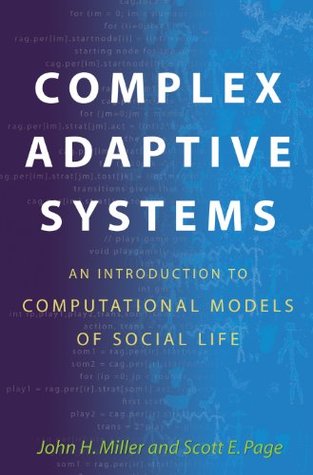More on this book
Community
Kindle Notes & Highlights
At the most basic level, the field of complex systems challenges the notion that by perfectly understanding the behavior of each component part of a system we will then understand the system as a whole. One and one may well make two, but to really understand two we must know both about the nature of “one” and the meaning of “and.”
It is the interest in between stasis and utter chaos. The world tends not to be completely frozen or random, but rather it exists in between these two states. We want to know when and why productive systems emerge and how they can persist.
In a complicated world, the various elements that make up the system maintain a degree of independence from one another.
Complexity arises when the dependencies among the elements become important. In such a system, removing one such element destroys system behavior to an extent that goes well beyond what is embodied by the particular element that is removed.
When a scientist faces a complicated world, traditional tools that rely on reducing the system to its atomic elements allow us to gain insight. Unfortunately, using these same tools to understand complex worlds fails, because it becomes impossible to reduce the system without killing it. The ability to collect and pin to a board all of the insects that live in the garden does little to lend insight into the ecosystem contained therein.
Social agents must predict and react to the actions and predictions of other agents. The various connections inherent in social systems exacerbate these actions as agents become closely coupled to one another. The result of such a system is that agent interactions become highly nonlinear, the system becomes difficult to decompose, and complexity ensues.
Regardless of the approach, the quest of any model is to ease thinking while still retaining some ability to illuminate reality.
If heterogeneity is a key feature of complex systems, then traditional social science tools—with their emphases on average behavior being representative of the whole—may be incomplete or even misleading.
Hives with genetic diversity produce much more stable internal temperatures. As the temperature drops, only a few bees react and huddle together, slowly bringing up the temperature. If the temperature continues to fall, a few more bees join into the mass to help out. A similar effect happens when the hive begins to overheat. This moderate and escalating response prevents wild swings in temperature. Thus, the genetic diversity of the bees leads to relatively stable temperatures that ultimately improve the health of the hive.
The difference of response between the two systems is due to feedback. In the temperature system, heterogeneity introduces a negative feedback loop into the system: when one bee takes action, it makes the other bees less likely to act. In the defense system, we have a positive feedback loop: when one bee takes action, it makes the other bees more likely to act.
The notion of emergence has deep intuitive appeal. Consider for the moment standing up close to a pixelated picture (see figure 4.1).1 While each individual pixel can be easily understood in terms of its shape, color, hue, and other properties, it is typically impossible to figure out the entire image by simply scanning across the pixels at close range. As the observer moves back, there is some point at which the overall image begins to resolve, and the pixels become indistinguishable. Once the image has resolved, we can typically make many possible alterations to individual pixels and still
...more
Alas, surprise and ignorance are closely related. It could be that emergent behavior is simply reflective of scientific ignorance rather than some deeper underlying phenomenon.
Profound scientific mysteries often get resolved in such a way that our prior ignorance becomes apparent, yet it is the ignorance that drives the quest for understanding.
When interactions are not independent, feedback can enter the system. Feedback fundamentally alters the dynamics of a system. In a system with negative feedback, changes get quickly absorbed and the system gains stability. With positive feedback, changes get amplified leading to instability.
Indeed, some of the best-recognized theoretical achievements surround the discovery of simple methods that circumvent difficult computations.
in top-down modeling we abstract broadly over the entire behavior of the system, whereas in bottom-up modeling we focus our abstractions over the lower-level individual entities that make up the system.
The instructions to “make a coffee mug” are likely to lead to a set of very similar objects, whereas the request to “make an object suitable for drinking a liquid” could result in a host of possibilities. Useful models arise when we impose just enough instructions to get objects of interest, but not so many as to preimpose a solution.


